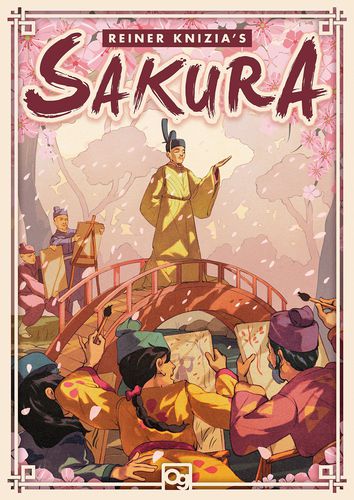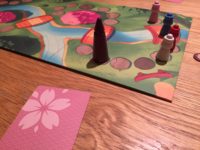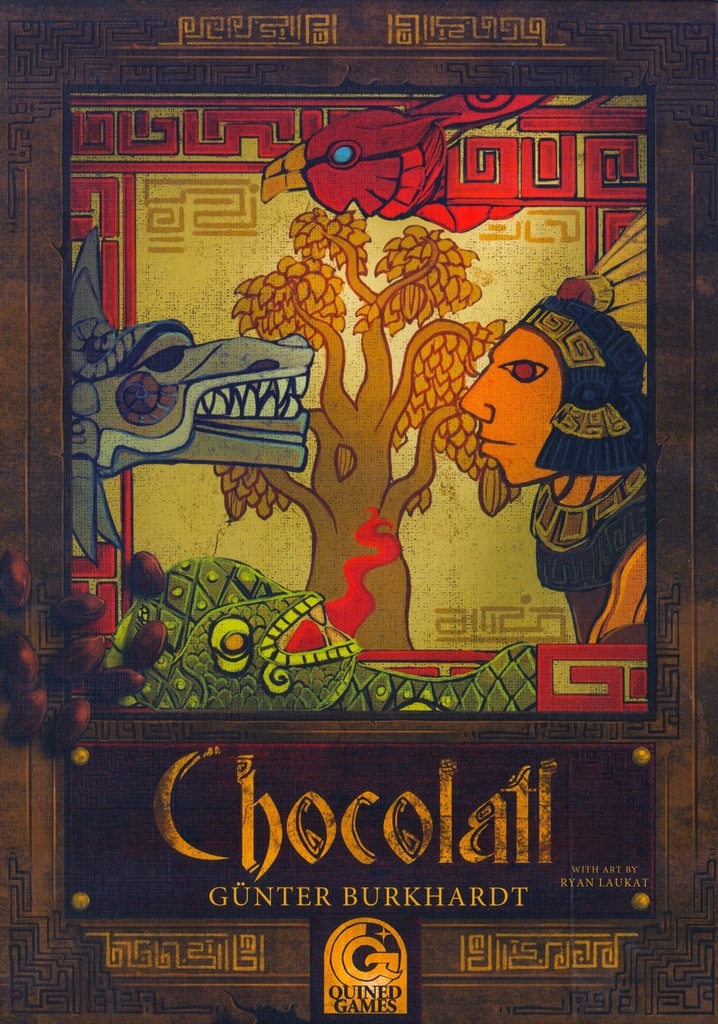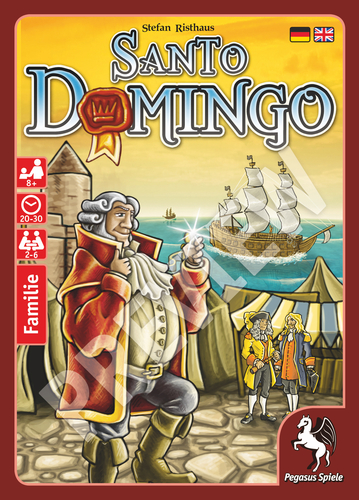- Learning time
- 10 minutes
- First play time
- 60 minutes
Sakura
Designed by: Reiner Knizia
In Sakura, the emperor has elected to take a walk through the beautiful gardens of cherry blossom, and you – the players – are painters, tip-toeing after, jostling for space and trying to be the closest when he or she pauses to admire the view. Being closest at these moments gives you the most honour (points) – but if in your silent squabbling you time your movement badly and bump into the emperor, then you are in disgrace – moving back down the path, and losing honour!
The board shows the path you all take, with the three spots the emperor will pause at clearly distinguishable. Players begin at the garden gate, with five honour in their possession, and are dealt five movement cards. Each player chooses a card to play and places it face-down on the table, before revealing simultaneously. The number on the cards dictate player order – lowest number goes first, with all players following in ascending order.
The symbols on the card tell you what to move, with the top symbol moving either the emperor or the furthest-forward/furthest-back painter on the path (which could be you, in either case). The bottom symbol tells you how far to move yourself along the path. When counting movement you only count empty spaces, not those occupied by the other players.
When the emperor reaches a viewing spot, the round ends immediately after the current player’s turn – and points are awarded for current positions. After each round players draw a new card from the deck, and repeat the process until the emperor reaches the final spot on the path – at which everyone compares their honour score – most points is the winner.
Joe says
I've only played once, and enjoyed it. The incidental humour Sam mentions is a lovely touch - something that I'm surprised to find in a few of Reiner Knizia's designs, given the often taut mathematical underpinnings of many of his games. I did have a slight feeling that there was no way to exert control over my own fate, but I'm sure some strategies for harnessing the chaos emerge over repeated plays.
The guru's verdict
-
Take That!
Take That!
A little. Other players can move your painter if you're furthest forward or furthest back.
-
Fidget Factor!
Fidget Factor!
Low.
-
Brain Burn!
Brain Burn!
Although there are decisions to be made, because there is so much information hidden from you (i.e. the other players cards) the game doesn't give you total control over events. Hence, there's no point agonising for too long over which card to play.
-
Again Again!
Again Again!
Cards bring some randomness, but essentially Sakura is a similar experience on each play.












Sam says
I like the theme here: players scurrying along behind the emperor sycophantically, but so immersed in their own jostling that they keep bumping into their majesty. The play is fast-moving and there's both humour and frustration when something goes wrong. I don't think this is a classic game - it's rather long for something so chaotic and can seem to depend heavily on luck. But pretty fun all the same.